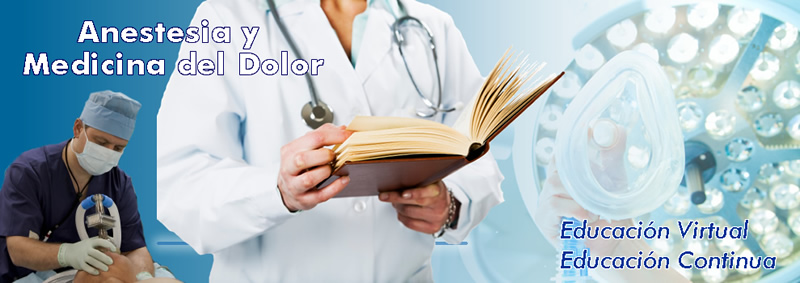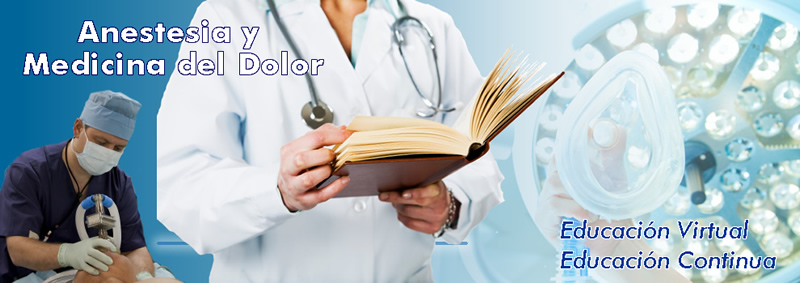| |||||||||||||
jueves, 1 de marzo de 2018
Complicaciones en anestesia regional / Regional anesthesia complications
Cuidados paliativos / Palliative care
| ||||||||||||
miércoles, 28 de febrero de 2018
Dr Carlos Cortés - 6to maratón de hombro y codo
Este sábado 3 de marzo del 2018 yo, el Dr. Carlos Cortés, estaré a tu servicio para brindarte un paquete de diagnóstico profesional completo a PRECIO ESPECIAL, para hallar la causa de tu dolor y comenzar tu tratamiento.
Te espero de 8 a 20 hrs, en el Centro Médico Puerta de Hierro.
Agenda tu consulta al 38482133 (Dpto. de Imagenología)
Poder en el tobillo y el mediopié durante la marcha y el ascenso en escalera en adultos sanos.
http://www.cirugiadepieytobillo.com.mx/academia/poder-en-el-tobillo-y-el-mediopie-durante-la-marcha-y-el-ascenso-en-escalera-en-adultos-sanos/
Ankle and Midfoot Power During Walking and Stair Ascent in Healthy Adults.
Fuente
Este artículo es publicado originalmente en:
https://www.ncbi.nlm.nih.gov/pubmed/29485306
https://journals.humankinetics.com/doi/10.1123/jab.2017-0095
De:
DiLiberto FE1, Nawoczenski DA2, Houck J3.
J Appl Biomech. 2018 Feb 27:1-28. doi: 10.1123/jab.2017-0095. [Epub ahead of print]
Todos los derechos reservados para:
Powered by Atypon® Literatum
Abstract
Ankle power dominates forward propulsion of gait, but midfoot power generation is also important for successful push off. However, it is unclear if midfoot power generation increases or stays the same in response to propulsive activities that induce larger external loads and require greater ankle power. The purpose of this study was to examine ankle and midfoot power in healthy adults during progressively more demanding functional tasks. Multi-segment foot motion (tibia, calcaneus, forefoot) and ground reaction forces were recorded as participants (N=12) walked, ascended a standard step, and ascended a high step. Ankle and midfoot positive peak power and total power, and the proportion of midfoot to ankle total power were calculated. One-way repeated measures ANOVAs were conducted to evaluate differences across tasks. Main effects were found for ankle and midfoot peak and total powers (all p < .001), but not for the proportion of midfoot to ankletotal power (p = .331). Ankle and midfoot power significantly increased across each task. Midfoot power increased in proportion to anklepower and in congruence to the external load of a task. Study findings may serve to inform multi-segment foot modeling applications and internal mechanistic theories of normal and pathological foot function.
KEYWORDS:
foot biomechanics; kinetics; multi-segment foot model
Resumen
El poder del tobillo domina la propulsión hacia adelante de la marcha, pero la generación de energía en el mediopié también es importante para un empuje exitoso. Sin embargo, no está claro si la generación de energía en el mediopié aumenta o permanece igual en respuesta a las actividades de propulsión que inducen cargas externas más grandes y requieren una mayor potencia en el tobillo. El propósito de este estudio fue examinar el poder del tobillo y el mediopié en adultos sanos durante tareas funcionales progresivamente más exigentes. Múltiples segmentos del movimiento del pie (tibia, calcáneo, antepié) y las fuerzas de reacción del suelo se registraron cuando los participantes (N = 12) caminaron, ascendieron un paso estándar y ascendieron a un paso alto. Se calculó la potencia máxima positiva y la potencia total del tobillo y el mediopié, y la proporción de potencia total desde el mediopié hasta el tobillo. Se realizaron ANOVA de medidas repetidas en un sentido para evaluar las diferencias entre tareas. Los principales efectos se encontraron para el tobillo y el mediopié del pico y las potencias totales (todos p <.001), pero no para la proporción de la energía del mediopié al tobillo (p = .331). El poder del tobillo y el mediopié aumentó significativamente en cada tarea. La potencia del mediopié aumentó en proporción a la fuerza del tobillo y en congruencia con la carga externa de una tarea. Los hallazgos del estudio pueden servir para informar las aplicaciones de modelado de pie multisegmento y las teorías mecanicistas internas de la función del pie normal y patológica.
PALABRAS CLAVE:
biomecánica del pie; cinética; modelo de pie multi-segmento
- PMID: 29485306 DOI: 10.1123/jab.2017-0095
martes, 27 de febrero de 2018
Mecanismo Inflamatorio de la Dermatitis Atopica
Conferencia; Mecanismo Inflamatorio de la Dermatitis Atopica.
Conferencia por el Dr. José Antonio Ortega Martell, Alergólogo Pediatra e Inmunologo de la Cd de Pachuca Hgo. donde describe los Mecanismos de inflamación de la Dermatítis Atópica, un fenómeno muy común en pediatria pero especial interés en la marcha Atopica ya que se ve a muy temprana edad. Describe la relacione la herencia y este problema. Describe los fenómenos inmunológicos como extrínsecos e intrínsecos según su participación en la etiología. Menciona la participación de la alteración de la Filagrina y Ceramina describe la utilidad de estas dos proteínas y su participación en el paso de antígenos a través de la piel. Relata la función de la Microbiota y especialmente de la Disbiosis y la proliferación de Fecalibacterium Prautsnitzii como germen que altera la dinámica de la piel. Habla de la teoría de la higiene y su relación a este fenómeno. Y como el comportamiento de diferente exposición de alegremos genera diferentes resultados. Nos describe el manejo con li¡ubicación preventiva, alimentacione con leche materna para prevenir la DA. Menciona diferentes fármacos entre ellos inhibidos de Calcineurina, Antihistaminicos, Antileucotrienos, Inmunosupresores, Inmunoterapia y recientemente la Crisoborola. Todo un paseo en la Biología Molecular de la DA
Ciberpeds: http://bit.ly/2g6Teaj
Conapeme: http://bit.ly/2EWJASN
Registro Off line: http://bit.ly/2zsu51k
--
Dr. Enrique Mendoza López
Webmaster: CONAPEME
Coordinador Nacional: Seminario Ciberpeds-Conapeme
Av La Clinica 2520-310 col Sertoma
Monterrey N.L. CP 64718
Tel (81) 83482940, (81)81146053
Cel 0448183094806
Conferencia por el Dr. José Antonio Ortega Martell, Alergólogo Pediatra e Inmunologo de la Cd de Pachuca Hgo. donde describe los Mecanismos de inflamación de la Dermatítis Atópica, un fenómeno muy común en pediatria pero especial interés en la marcha Atopica ya que se ve a muy temprana edad. Describe la relacione la herencia y este problema. Describe los fenómenos inmunológicos como extrínsecos e intrínsecos según su participación en la etiología. Menciona la participación de la alteración de la Filagrina y Ceramina describe la utilidad de estas dos proteínas y su participación en el paso de antígenos a través de la piel. Relata la función de la Microbiota y especialmente de la Disbiosis y la proliferación de Fecalibacterium Prautsnitzii como germen que altera la dinámica de la piel. Habla de la teoría de la higiene y su relación a este fenómeno. Y como el comportamiento de diferente exposición de alegremos genera diferentes resultados. Nos describe el manejo con li¡ubicación preventiva, alimentacione con leche materna para prevenir la DA. Menciona diferentes fármacos entre ellos inhibidos de Calcineurina, Antihistaminicos, Antileucotrienos, Inmunosupresores, Inmunoterapia y recientemente la Crisoborola. Todo un paseo en la Biología Molecular de la DA
Ciberpeds: http://bit.ly/2g6Teaj
Conapeme: http://bit.ly/2EWJASN
Registro Off line: http://bit.ly/2zsu51k
--
Dr. Enrique Mendoza López
Webmaster: CONAPEME
Coordinador Nacional: Seminario Ciberpeds-Conapeme
Av La Clinica 2520-310 col Sertoma
Monterrey N.L. CP 64718
Tel (81) 83482940, (81)81146053
Cel 0448183094806
Sexto Maratón de hombro y codo doloroso el 3 de Marzo en el centro médico Puerta de Hierro. Video
¡Recupera tu bienestar!
Este sábado 3 de marzo del 2018 yo, el Dr. Carlos Cortés, estaré a tu servicio para brindarte un paquete de diagnóstico profesional completo a PRECIO ESPECIAL, para hallar la causa de tu dolor y comenzar tu tratamiento.
Te espero de 8 a 20 hrs, en el Centro Médico Puerta de Hierro.
Agenda tu consulta al 38482133 (Dpto. de Imagenología)
12° Congreso Iberolatinoamericano de Cirugía de Mano. 2018
http://www.clinicademano.com.mx/academia/12-congreso-iberolatinoamericano-de-cirugia-de-mano-2018/
12° Congreso Iberolatinoamericano de Cirugía de Mano. 2018
Póster y Códigos QR para ver o descargar el programa y la convocatoria para los trabajos libres del próximo congreso ILA
Suscribirse a:
Entradas (Atom)








